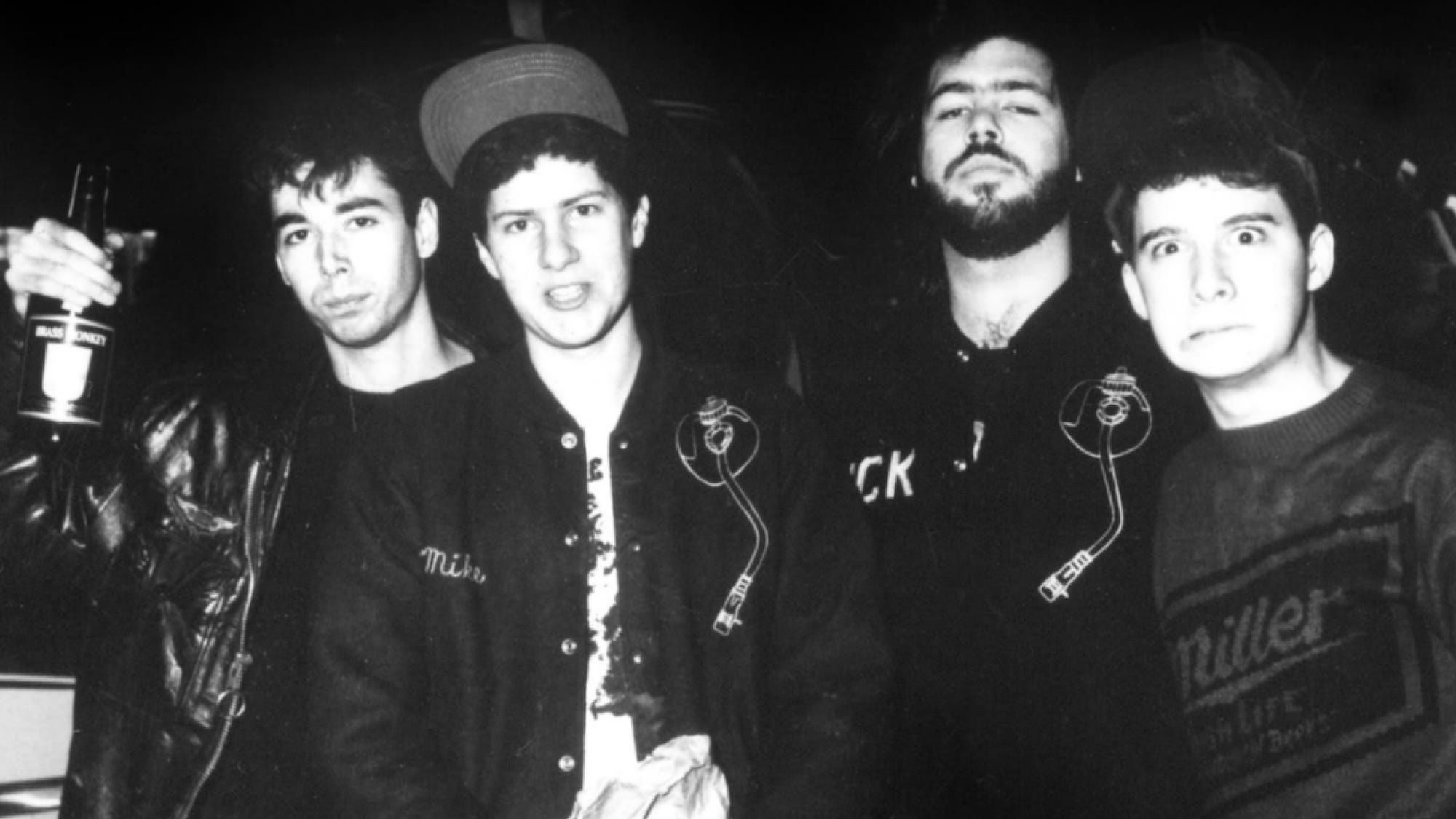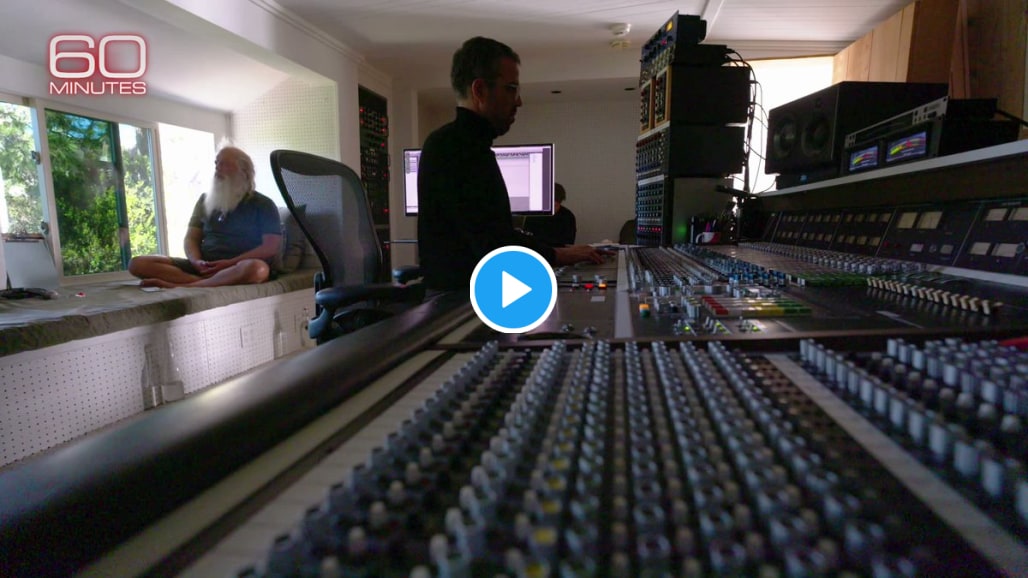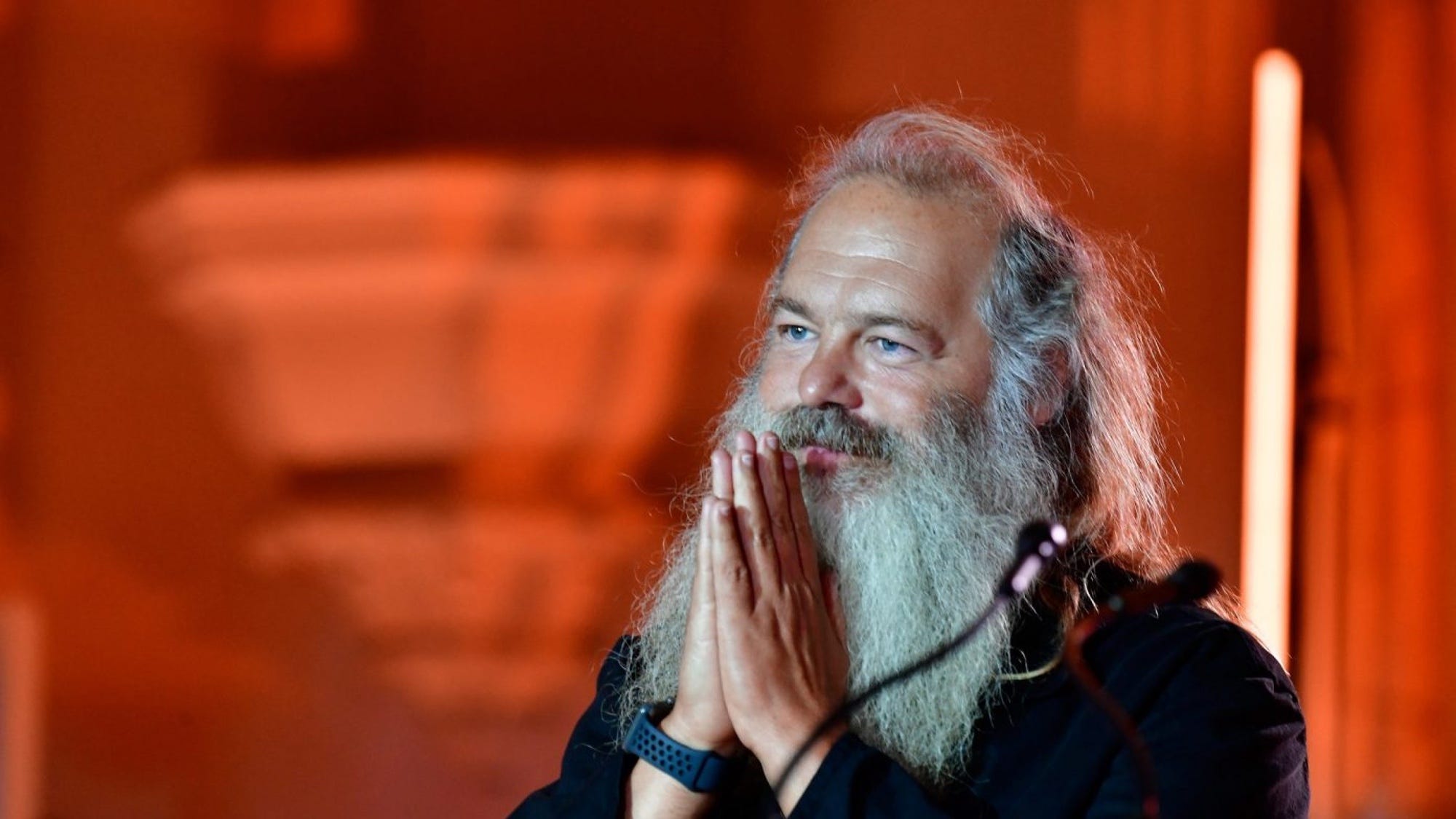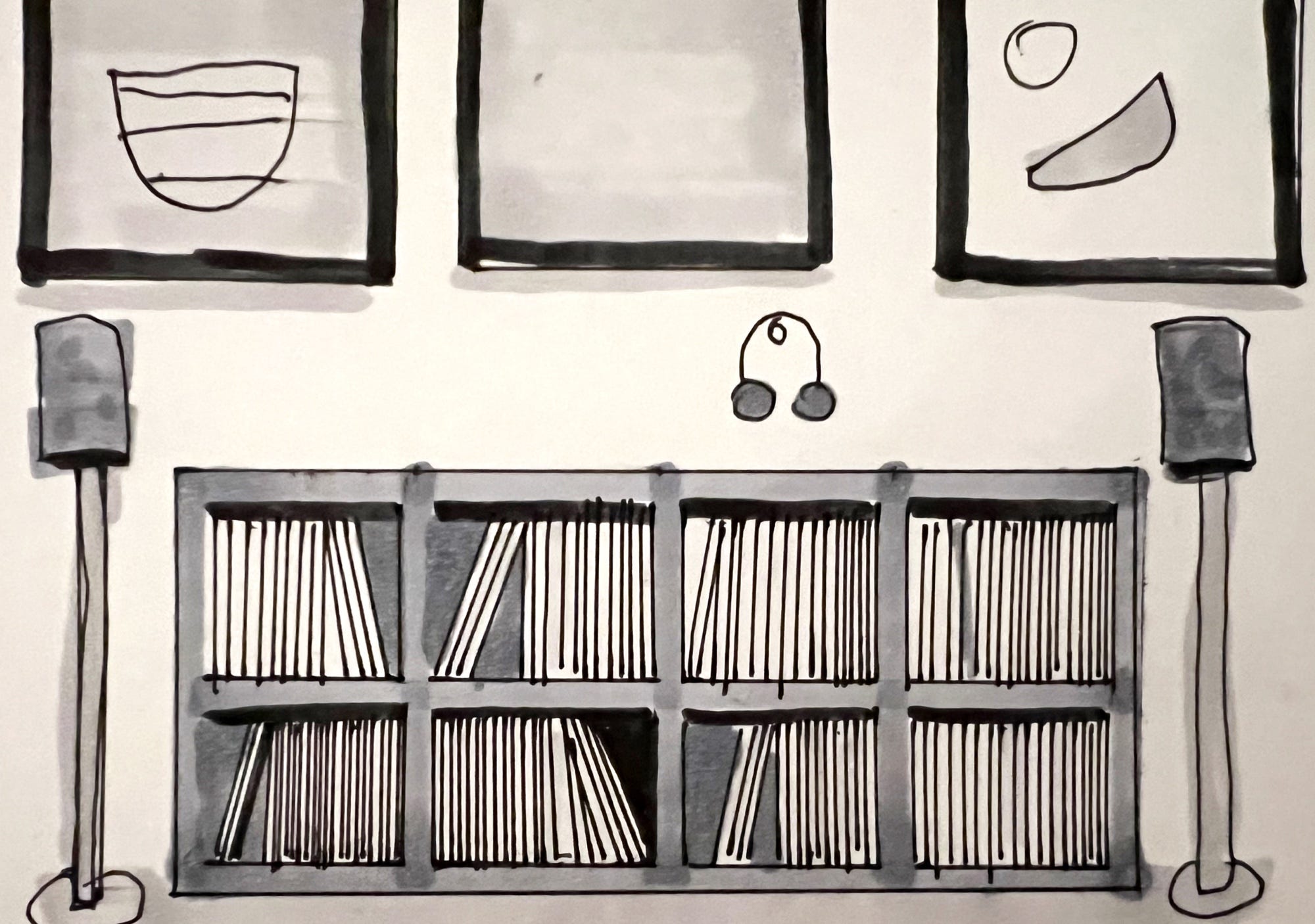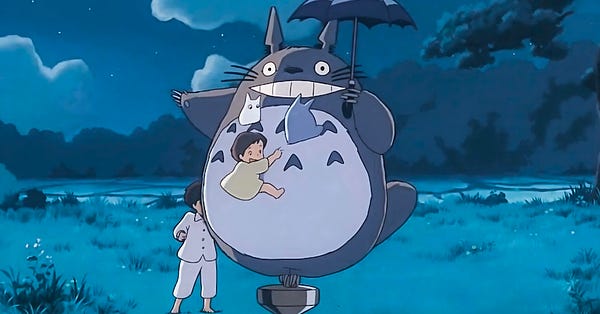Proof of Concept - The role of taste (and what it means)
The role of taste (and what it means)Issue 130: A look at the most subjective skill and how to harness itHappy Sunday from Brooklyn, NY. This week, many new memories made were in familiar places in my former neighborhood of Brooklyn Heights. I lived in the neighborhood near the promenade overlooking the iconic bridge named after the borough and skyline of Manhattan for four years—a place still that feels like home every time I visit. In addition to being home to the best Sardinian restaurant in New York, Brooklyn Heights is where Adam Yauch Park, is named after the legendary member of the Beastie Boys, MCA. Formerly, Squibb Park, the park was renamed to dedicate Yauch, who died of cancer in 2012 (RIP MCA). Brooklyn Heights is where Yauch grew up, and his mom Frances still lived there at the time I was there. This isn’t an important prelude, but a segway to talk about a man who had a close relationship with the Beastie Boys and many other iconic musicians: Rick Rubin. This week, we’ll talk about Rubin as the proxy of the role of taste in design. A few weeks ago, 60 Minutes posted their 60 Minutes interview, a sit-down with Anderson Cooper and Rick Rubin, a record producer, and co-founder of Def Jam Records. This interview is in part of the launch of Rubin’s new book, The Creative Act: A Way of Being. The tweet from the 60 Minutes account sparked many thoughts about Rubin, such as, “what does he actually do then?”  “I have no technical ability. And I know nothing about music.”
Music producer Rick Rubin says he can barely play any instruments, but says artists come to him because of “the confidence I have in my taste and my ability to express what I feel.” cbsn.ws/3w3nKc7 Wait, what on Earth does Rubin actually do then? Is he one of those “I have an app idea” guys (it’s always a guy) who needs the talents of product developers who can actually build the app? Surely someone who hasn’t been a designer cannot have design taste because they haven’t spent hundreds of thousands of dollars to go to the Rhode Island School of Design, right? The answer is, Rubin is kind of like all these things, but he’s damn good at his job, which is having great taste, spotting talent, and popularizing it. Rubin represented artists such as the Beastie Boys, Run-DMC, Public Enemy, LL Cool J, Red Hot Chili Peppers, Rage Against the Machine, and the litany of legends go on. Let’s talk about taste and the role it plays in creativity and software. “Taste” undefined is vague like those words that generalize without substance, like “cultural fit.” In essence, taste is curating subjectivity in a way that brings objectivity to your vision. It’s the ability to say, “this is dope, and I’ll tell you in a detailed manner why it is.” Taste is being able to articulate why you enjoy the Riot in Belgium’s remix of Chromeo’s Bonafied Lovin more than the original. Everyone has taste, but not all of it is good. In fact, much of it is bad. For example, I could tell you I love Nickelback and listen to it every waking minute of my life (to be clear, I don’t) but that doesn’t mean my taste is good in comparison to the taste of others. Taste also doesn't equate to things you like. I love watching The Expendables or Jean-Claude Van Damme films but would absolutely not equate that to my film curation of great taste. Taste without credibility doesn’t go farThere was a reason artists like LL Cool J were sending demo tapes to Rick Rubin’s dorm room at NYU to get it in front of him. His taste was respected and trend-setting. There are two ways to get respect for your taste. The first is Rubin's way, where you have such a grasp on what you like that it influences how other people like it. The second is having a such pedigree in the work you've done in your craft that people respect your taste. As a designer and builder, the second one is your greatest power. Taste and skills are a powerful combo, though not mutually exclusiveRick Rubin is not a musician, he’s a producer. They are two different roles the same way a Product Manager and Designer are different roles. Rubin’s role is not to be a legendary musician, it’s to ensure legendary music gets produced and get it adopted by the mass audiences. The role of taste is spotting what makes the product pleasing and articulating to people. On the flip side, it is possible for a person to be highly skilled in their craft and have a low form of taste. Perhaps the technical proficiency is through the roof, but the expression of it does not resonate with the audience. You can design interfaces or write software that has absolutely no taste, and having taste can be the differentiator between what you make vs. an interface generated by Artificial Intelligence (AI). There are people who are producers and musicians—excelling at both. Dr. Dre, Dave Grohl, Pharrell, and Trent Reznor are all musicians who are producers as well. They are the product-minded designers of the music industry. Articulating tasteOne of my favorite series is Detail by the late great Kobe Bryant on ESPN. In this series, Bryant breaks down the specific attributes of what makes certain players great—a great comparison of how great taste can be articulated. Saying something is modern or on brand without any articulation of why is not taste. It's saying a very obvious thing with no substance. Developing tasteI don’t believe taste is a god-given skill only a chosen few have the same way Sir Edward de Bono believes creativity is a skill that can be nurtured and grown. The sense of taste comes more naturally to some and takes years to develop, so you’re going to have to practice a lot. The famous radio personality Ira Glass has a great quote about this in his interview The Art of Storytelling: “Nobody tells this to people who are beginners, I wish someone told me. All of us who do creative work, we get into it because we have good taste. But there is this gap. For the first couple years, you make stuff, it’s just not that good. It’s trying to be good, it has potential, but it’s not. But your taste, the thing that got you into the game, is still killer. And your taste is why your work disappoints you. A lot of people never get past this phase, they quit. Most people I know who do interesting, creative work went through years of this. We know our work doesn’t have this special thing that we want it to have. We all go through this. And if you are just starting out or you are still in this phase, you gotta know it’s normal and the most important thing you can do is do a lot of work. Put yourself on a deadline so that every week you will finish one story. It is only by going through a volume of work that you will close that gap, and your work will be as good as your ambitions. And I took longer to figure out how to do this than anyone I’ve ever met. It’s gonna take a while. It’s normal to take a while. You’ve just gotta fight your way through.” I’m not telling you to go be a producer and focus on only taste, but your taste will be the differentiator between you and other designers or software engineers in the craft of your work. A lot of people have taste, but very few dare to have a greater taste and be creative. If you’re at a loss on how to develop taste, here are a few quick ideas of ways to practice:
Taste builds an objective standard for very subjective topics. I will bet in any profession you’ll work with someone who has taste without skill. Instead of balking at them, find ways to collaborate (remember, you have to respect them in order for this to work). There are many Rick Rubin and Beastie Boys relationships throughout industries. The brand marketer works with the creative director, venture capitalists, and founder, etc. It’s quite possible that a16z is the Def Jam Records of tech (don’t tell them that). In a world where generative AI, design systems, and automation of software (which I am a huge supporter of), perhaps having great taste is the most human factor we can hold on to as a differentiator. Happy taste-making and curating. Tweet of the weekHuge congrats to Spencer on going indie. I’m so excited to follow your research and art!  📮 𝒔𝒐𝒎𝒆 🆕𝒔 📮
I’ve moved on from Coda and pursuing independent research and art.
Broadly I’m imagining futures of computing rooted in communal agency—one with new ways for making space, relating on the internet, and small-scale infrastructure.
spencerchang.substack.com/p/towards-flig… Hype links
|
Older messages
Pondering the future of web interactions
Sunday, February 5, 2023
Issue 129: If the internet was designed today, what would it feel like?
Embracing duality
Sunday, January 29, 2023
Issue 128: Avoiding the limitations of binary thinking
Build better products by playing video games
Sunday, January 22, 2023
Issue 127: The unspoken benefits of button mashing
Announcing paid subscriptions for Proof of Concept
Friday, January 20, 2023
A sneak peak at (hopefully) exciting changes to come
Making an ergonomic workspace
Friday, January 20, 2023
Issue 126: No more shrimp postures
You Might Also Like
The New Kitchen Trends on Our Radar
Thursday, March 6, 2025
View in your browser | Update your preferences ADPro Kitchen Confidential We at AD PRO see the kitchen as a bellwether for the rest of the home—a place where technology stays a couple of steps ahead,
🐺 How to kick start your PR efforts.
Wednesday, March 5, 2025
Lessons from a veteran publicist. ͏ ͏ ͏ ͏ ͏ ͏ ͏ ͏ ͏ ͏ ͏ ͏ ͏ ͏ ͏ ͏ ͏ ͏ ͏ ͏ ͏ ͏ ͏ ͏ ͏ ͏ ͏ ͏ ͏ ͏ ͏ ͏ ͏ ͏ ͏ ͏ ͏ ͏ ͏ ͏ ͏ ͏
How Rita Konig Gets Clients to Take Risks
Tuesday, March 4, 2025
View in your browser | Update your preferences ADPro It has been a career-defining few years for Rita Konig. First there was the British interior designer and author's Create Academy course, which
#497: Color Palettes and Generators
Tuesday, March 4, 2025
How to fix a broken color palette, accessible color combinations, color names and palette generators. Issue #497 • Feb 28, 2025 • View in the browser Smashing Newsletter Pryvit! Smashing Friends, How
180 / Make your everyday browsing ridiculously beautiful
Monday, March 3, 2025
Product Disrupt Logo Product Disrupt Half-Monthly Feb 2025 • Part 2 View in browser Welcome to Issue 180 Last year I teamed up with two of my close friends on a side project we're all obsessed with
Accessibility Weekly #438: When to Use Lists
Monday, March 3, 2025
March 3, 2025 • Issue #438 View this issue online or browse the full issue archive. Featured: When to use lists for better accessibility "When creating HTML content, using lists appropriately is
High touch recruiting
Sunday, March 2, 2025
Issue 235: Long-lasting candidate experiences ͏ ͏ ͏ ͏ ͏ ͏ ͏ ͏ ͏ ͏ ͏ ͏ ͏ ͏ ͏ ͏ ͏ ͏ ͏ ͏ ͏ ͏ ͏ ͏ ͏ ͏ ͏ ͏ ͏ ͏ ͏ ͏ ͏ ͏ ͏ ͏ ͏ ͏ ͏ ͏ ͏ ͏ ͏ ͏ ͏ ͏ ͏ ͏ ͏ ͏ ͏ ͏ ͏ ͏ ͏ ͏ ͏ ͏ ͏ ͏ ͏ ͏ ͏ ͏ ͏ ͏ ͏ ͏ ͏ ͏ ͏ ͏ ͏ ͏ ͏ ͏ ͏ ͏
All Compute Must Flow
Sunday, March 2, 2025
“If I don't have that kind of compute on Day 1, I can't breathe." ͏ ͏ ͏ ͏ ͏ ͏ ͏ ͏ ͏ ͏ ͏ ͏ ͏ ͏ ͏ ͏ ͏ ͏ ͏ ͏ ͏ ͏ ͏ ͏ ͏ ͏ ͏ ͏ ͏ ͏ ͏ ͏ ͏ ͏ ͏ ͏ ͏ ͏ ͏ ͏ ͏ ͏ ͏ ͏ ͏ ͏ ͏ ͏ ͏ ͏ ͏ ͏ ͏ ͏ ͏ ͏ ͏ ͏ ͏ ͏ ͏
🐺 Is a trade show is your right next step?
Friday, February 28, 2025
Q&A with Shoppe Objects' founders ͏ ͏ ͏ ͏ ͏ ͏ ͏ ͏ ͏ ͏ ͏ ͏ ͏ ͏ ͏ ͏ ͏ ͏ ͏ ͏ ͏ ͏ ͏ ͏ ͏ ͏ ͏ ͏ ͏ ͏ ͏ ͏ ͏ ͏ ͏ ͏ ͏ ͏ ͏ ͏
AD100 Designers on Battling Burnout
Thursday, February 27, 2025
View in your browser | Update your preferences ADPro Get Your Groove Back Most days, working in the design field is creatively fulfilling. But occasionally, in the throes of tight project timelines,
